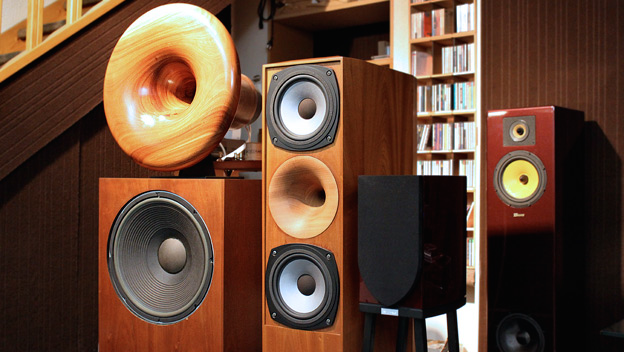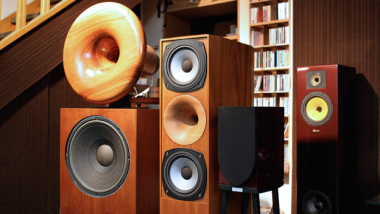
Hurrah for bone-rattling music:
When a stereo-buff friend took me to La Maison du Haut Parleur promising an extra-sensory treat, a visit to an opium den would not have had a more profound effect. We sat in the sweet spot on two directors’ chairs, and Monsieur Gest delicately placed the needle on a record. An oboe began its plaintive song; a cello answered and as the orchestra swelled the music resonated in our very bones.
I may be a half-century late with this, but actually that's how long that I have railed against amplification in musical theater. The renewed interest is prompted by going from S.F. Playhouse's Promises, Promises to 42nd Street Moon's revival of Cole Porter's Something for the Boys at the Eureka Theatre.
At the former, everything is amplified; in the Eureka nothing is — not the singers, not the accompanying duo of Dave Dobrusky on piano, Nick Di Scala on woodwinds — it's all real and unaltered. (Di Scala is also in the S.F. Playhouse band. I am not sure how he manages to handle the schedule, but given how good he is, it's all to the good.) What it took for the Eureka to be free of amplification is co-directors Greg MacKellan and Stephanie Rhoads opting for that alternative.
Going from the amplified to the acoustic is an interesting experience: at first, you want to turn up the volume, but very quickly both the ears and the listener adjust, and once again, you reach out for the music, instead of being surrounded, saturated, overwhelmed by it. It's what music is, how music should be heard.
I am well aware of the demands of large venues (although the 3,346-seat War Memorial does just fine without amplification) and the need to fix problems in some concert halls and theaters where the architect forgot to provide for the natural flow of sound — and let's remember how that went on at Lincoln Center and, more successfully, in Davies Symphony Hall (thank you, Gordon Getty, for the $9 million correction).
It is also obvious that there are companies working hard on making amplification sound "natural":
- "Other audio processing companies create effects that change the sound. Audyssey's approach is fundamentally different and helps content play back as close to the original as possible."
- "Every performance deserves to be heard with the right acoustics. Meyer Sound’s Constellation electroacoustic architecture makes a venue sound its best for every event."
And so on. "Our amplification is just like the natural sound, you can't tell it apart ..." Yes, you can, and so can your budget: "making sound natural" is not cheap. And it's really difficult to justify amplification in 99-seat theaters, chamber-music venues, and the like, but there you are, and 42nd Street Moon is an exception to the (incomprehensible) rule.
Beyond the simple and clear issue of saving natural sound in small venues, there are other considerations in this matter, such as the one raised by British composer Jonathan Harvey:
The mass of young people don’t like concert halls... They wouldn’t normally go to one except for amplified music. They have no concept of what it is to hear music as soft as a pin dropping and that kind of delicacy and refinement. So there’s a big divide between amplified music and non-amplified music and the two cultures.I think what the future must bring is things which are considered blasphemous like amplifying classical music in an atmosphere were people can come and go, where they can even talk, perhaps, and it wouldn’t be sacrilege and they can certainly leave in the middle of a movement if they feel like it. These are the sort of situations where young people’s music takes place.
For an example of something being done about Harvey's suggestion, see another Music News item, about San Francisco Symphony's SoundBox.

